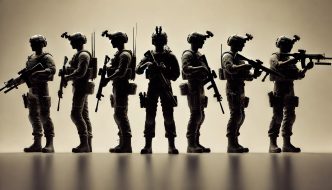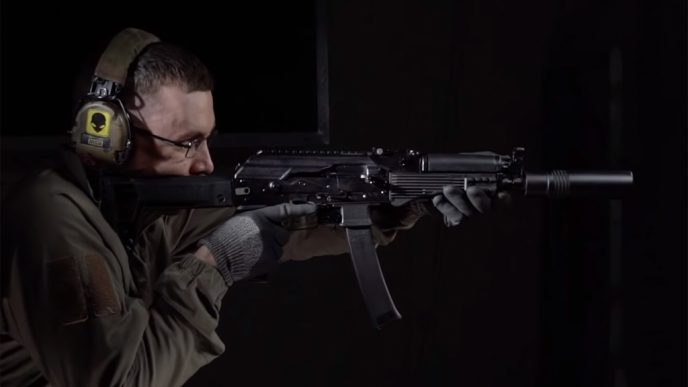BRDM-1 is the first purpose-built Soviet amphibious armored scout car to enter service. It was a successor of the older BA-64 and was built on the chassis and drive train of the BTR-40 armored personnel carrier. It is the world’s first mass-produced combat vehicle of its class.
Introduction
The BRDM-1 primary advantage over other vehicles of that time was its amphibious capability. It was its main advantage over its direct counterpart, BTR-40. Another unique feature of the vehicle’s design was two pairs of chain-driven auxiliary wheels, which could be lowered to provide additional traction on muddy terrain.
The BRDM-1 was manufactured from 1957 to 1966 when 10,000 units entered service with the Soviet Union and its military allies worldwide. It was superseded by the improved BRDM-2, which possessed greater amphibious capabilities, a more powerful engine, and a fully enclosed turret.

Development
BRDM-1 (4×4) was developed in the mid-1950s and entered service with the Russian Army in 1957. The later BRDM-2 (4×4) amphibious reconnaissance vehicle has replaced it in all front-line Russian units.
BRDM-1 is fully amphibious, propelled by a single waterjet mounted at the hull rear. Before entering, a trim vane is erected at the hull front, and bilge pumps switched on. On each side of the hull, between road wheels, is a set of powered belly wheels that are lowered to the ground to improve cross-country mobility. Tyre pressure regulation system is fitted as standard.
Typical armament comprises a 12.7 mm DShKM machine gun at the front and a 7.62 mm SGMB machine gun at the rear of the crew compartment.
Key recognition features
- A pointed nose containing the engine slopes upwards towards the crew compartment, extending almost to the vehicle’s rear. Only men’s entry and exit via roof hatches.
- Hull sides and rear are vertical, but the crew compartment’s front, sides, and rear slope inwards with two armored covers on the front and two firing ports on the sides.
- On each side of the hull between roadwheels are two belly wheels raised when traveling on roads. Trim vane under nose when not in use.
Variants
BRDM-1 Model 1957
It had an open roof, but only a few were built.
BRDM-1 Model 1958
It was most common, with enclosed roofs and hatches.
BRDM-U
It is a command model with four radio antennas compared with one in the standard vehicle.
BRDM-RKhh
It is a radiological-chemical reconnaissance vehicle with two rectangular packs at the rear for dispensing poles with pennants.
BRDM-1 with four Swatter ATGWs
This model had Swatter ATGWs raised from inside for launching, rarely seen today.
BRDM-1 with six Sagger ATGWs
This model had Sagger ATGWs raised from inside, complete with overhead armor protection; rarely seen today.
Status
Production complete. Has been in service with Albania, Bulgaria, Russia, Congo, Cuba, Guinea, Mozambique, Sudan, and Zambia. The vehicle is still found in reserve units in most of these countries.

Technical specifications
| Country of origin: | SSSR |
| Manufacturer: | Molotov GAZ plant, Gorkiy |
| Crew: | 5 |
| Configuration: | 4×4 |
| Armament: | 1 x 7.62mm machine gun |
| Ammunition: | 1,250 x 7.62 mm |
| Length: | 5.7 m |
| Width: | 2.25 m |
| Height: | 1.9 m (without machine gun) |
| Ground clearance: | 0.315 m |
| Wheelbase: | 2.8 m |
| Weight, combat: | 5,600 kg |
| Power-to-weight ratio: | 16.7 hp/tonne |
| Engine: | GAZ-4oP 6-cylinder water-cooled-in-line petrol |
| Maximum road speed: | 80 km/h |
| Maximum water speed: | 9 km/h |
| Maximum road range: | 500 km |
| Fuel capacity: | 150 lit |
| Fording: | Amphibious |
| Vertical obstacle: | 0.4 m |
| Trench: | 1.22 m |
| Gradient: | 60% |
| Side slope: | 30% |
| Armor: | 10 mm (maximum) |
| Armor type: | Steel |
| NBC system: | None |
| Night vision equipment: | Yes (infra-red for driver only) |













